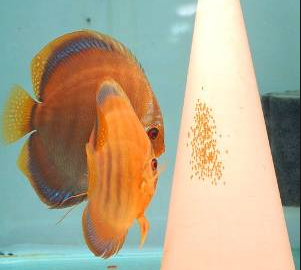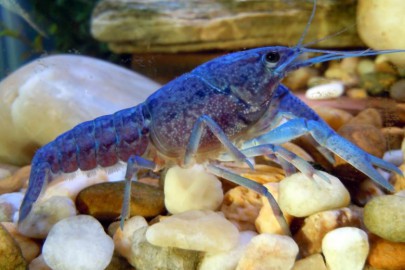How to Hatch Brine Shrimp
Storing Brine Shrimp Eggs
First of all, you need to start with healthy, properly stored eggs. All brine shrimp eggs need to be stored as follows:
• in a tightly sealed container;
• free from moisture; and
• in a cool environment at or below 50°F. (Refrigeration is ideal for short term storage, i.e., less than three to four weeks; for longer term storage, eggs are best kept at or below freezing.)
The above storage guidelines apply to all brine shrimp eggs, whether in opened or unopened tins.
How to Hatch Brine Shrimp – Hatching Environment
Here are the recommended conditions on How to hatch brine shrimp:
• Salinity:
25 parts per thousand (ppt) salt solution, or approximately 1 and 2/3 tablespoons of salt per quart (or liter) of water. Be sure to use marine salt or solar salt.
• pH:
Proper pH is important in hatching brine shrimp. A starting pH of 8.0 or higher is recommended. In areas where the water pH is below 7, Epson salt or magnesium sulfate can be added at the rate of 1/2 teaspoon per quart of solution to buffer the hatching solution.
• Temperature:
Optimum water temperature for a 24-hour complete hatch is 80-82°F or 26-28°C. Lowering the temperature would result in a longer hatching time. Do not exceed 30°C.
• Light:
Illumination is necessary to trigger the hatching mechanism within the embryo during the first few hours of incubation. Maintaining a light source during the entire incubation period is recommended to obtain optimum hatch results and for temperature control.
• Aeration:
Constant aeration is necessary to keep cysts in suspension and to provide sufficient oxygen levels for the cysts to hatch. A minimum of 3 parts per million dissolved oxygen during the incubation is recommended. Strong aeration should not damage or hurt the brine shrimp cysts or nauplii.
• Stocking Density:
1 gram per liter or quart or approximately 1/2 level teaspoon of cysts per quart is recommended. A higher stocking density will result in a lower hatch percentage.
• Hatching Cone:
Flat-bottom hatching vessels should be avoided. Cone or “V” bottomed containers are best to insure that the cysts remain in suspension during hatching. Be sure to thoroughly wash the hatching cone with a light chlorine solution, rinse, and allow to air-dry between uses. Avoid soap. Soap will leave a slight residue which will foam from aeration during hatching and leave cysts stranded above the water level.
• Incubation Period:
Generally, the optimum incubation time is 24 hours. Egg which has been properly stored for more than 2-3 months may require additional incubation time — up to 30-36 hours. Oftentimes, eggs will hatch in as few as 18 hours. If a smaller size nauplii (Instar I) is desired, a harvest time of 18 hours is recommended.
How to Hatch brine Shrimp – Hatching Procedure
i. Set Up: Place hatching cone or similarly shaped vessel in well-lit area. Cone should be semi-translucent for ease of harvesting and light transmission.
ii. Add Water: Fill cone with water and adjust salinity to 25 ppt (parts per thousand). Optimum hatching temperature is 82°F (28°C).
iii. Add Cysts: Add cysts at the rate of 1 gram per liter.
iv. Aerate: Provide adequate aeration to keep cysts in suspension.
v. Hatch: Depending upon water temperature, cysts should hatch in approximately 18-36 hours.
vi. Harvest: After hatching brine shrimp, turn off or remove aeration and wait several minutes for the shells and baby brine shrimp (or nauplii) to separate. Newly hatched nauplii will settle to the bottom of the cone or move towards a light source; the shells will float to the surface. Once separated, the nauplii can be siphoned from the bottom with a length of air tubing or gently drained through the bottom of the cone through a valve, if so equipped.
vii. Rinse: The warm incubation temperatures and metabolites from the hatching medium create ideal conditions for a bacteria bloom. Rinsing of the baby brine shrimp in a fine mesh net or sieve using clean fresh or salt water is important before feeding them to your fish.
viii. Clean Equipment: Tanks and brine shrimp hatching equipment should be cleaned and disinfected routinely.






